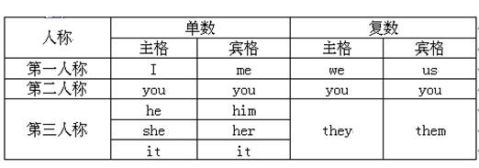20xx年成人高考专升本英语语法知识梳理形容词

更多专升本信息请访问:/crgk/zhuanshengben/
20xx年成人高考专升本英语语法知识梳理形容词
形容词与副词
一、形容词在句子中的作用
1、形容词在句子中可以作定语、表语、宾语补足语。
Agoodboymustbehavehimself.好孩子应当行为规矩。(定语)
Ilikethisreddressverymuch.(定语)
Sheisbeautiful.(表语)
Thepatientisasleep.(表语)
Whohasgotthewindowopen?(宾语补足语)
I'vegoteverythingreadyfortheclass.(宾语补足语)
Isaiditwouldhappen,andsureenoughitdidhappen.(独立成分)
2、大多数形容词既可作定语又可作表语,但有少数形容词只能作表语。 Thisisareddress.Thedressisred.
二、副词在句子中的作用
副词在句子中主要作状语,可以修饰动词、形容词、副词,有时修饰整个句子。
Unfortunately,hewasn'tathomewhenIcame.(修饰整个句子)
Luckily,shewasn'tinjuredintheaccident.(修饰整个句子)
Herpronunciationisverygood.(修饰形容词)
Icanhardlyagreewithyou.(修饰动词)
Heworksterribly(quite)hard.(修饰副词)
alike,afraid,alone,asleep,awake,aware,alive,ashamed,unable,content.
三、形容词和副词比较级和最高级的构成
1.单音节词和少数双音节词(如以y结尾的)在词尾加-er,-est.
猎学网-为学员提供最优质的教育服务

更多专升本信息请访问:/crgk/zhuanshengben/
如:small,smaller,smallest;great,greater,greatest;clever,cleverer,
cleverest;quiet,quieter,quietest;common,commoner,commonest;narrow,narrower,narrowest.
2、以e结尾的词加-r,-st.
如:larger,larger,largest;simple,simpler,simplest;polite,politer,politest;brave,braver,bravest;fine,finer,finest.
3、以“辅音字母+y”结尾的词,变y为i再加-er,-est.
如:busy,busier,busiest;heavy,heavier,heaviest;happy,happier,happiest.
4、以一个辅音字母结尾的词,双写该辅音字母,再加-er,-est.(一个辅音字母结尾;重读闭音节)
如:big,bigger,biggest;thin,thinner,thinnest;hot,hotter,hottest. 双音节词,多音节词比较级和最高级在词前加more,most.
如:difficult,moredifficult,mostdifficult,interesting,moreinteresting,mostinteresting;useful,moreuseful,mostuseful.
四、形容词和副词比较级的用法
1、比较级常与than引导的状语从句连用,表示与什么相比。
Thisroomisbiggerthananyotheroneinthehotel.
为了避免重复,从句常用一些代词。
比较必须是两个相同的成分。
Everydayhearrivesearlierthananyoneelseinthecompany.
Itisbettertobepreparedthanunprepared.
Thisiseasiersaidthandone.
Imeetwithmoredifficultiesthanshedoes.
Thegirlsinmyclassaremoreactivethanthoseinhisclass.
1、有than就要考虑比较级。
猎学网-为学员提供最优质的教育服务

更多专升本信息请访问:/crgk/zhuanshengben/
2、比较的成分要完全一致。
2、“比较级+and+比较级”,表示“越来越…”。
MyfatherwalkedfasterandfasteruntilIcouldnolongerkeepupwithhim.
MyfatherwalkedfasterandfasteruntilIcouldn'tkeepupwithhimanylonger.(not用来否定动词)
Ourcountryisgettingstrongerandstronger.
Thingsaregettingbetterandbettereveryday.
I'mgettingmoreandmoreinterestedinarts.
getinterestedin对……感兴趣
3.“the+比较级…,the+比较级”,表示“越是…就越…”。
Themorehaste,thelessspeed.欲速则不达。
Thehardersheworks,themoreprogressshemakes.
makeprogress取得进步
ThemoreIstudyit,themoreIlikeit.
Actually,thebusierheis,thehappierhefeels.
Themorepreparationyoudonow,thelessnervousyou'llbebeforetheexam. Thesooneryoustart,thefasteryou'llbefinished.
五、形容词和副词最高级的用法
最高级的前面通常要加定冠词,副词最高级前面的定冠词可以省略。最高级在使用时通常有一个短语或从句表示比较的范围。
OfalltheplacesI'vevisited,IlikeHangzhoubest.
ThisistheworstmovieI'veeverseen.
Beijingisoneofthelargestcitiesintheworld.
Forme,Tuesdayisoneofthebusiestdayintheweek.
猎学网-为学员提供最优质的教育服务

更多专升本信息请访问:/crgk/zhuanshengben/
Amongallthestudents,heruns(the)fastest.
比较级前面有时也加the,表示两者之间“较…的一个”。
Bothofthetwogirlsarebeautiful,butIthinkthetalloneismorebeautifulofthetwo. Thefive-year-oldboychosethemoreexpensiveofthetwotoys.
六、“as+原级+as”,“notas/so+原级+as”
“as+原级+as”,表示“和…一样…”,“notas/so+原级+as”表示“不及…”。 Heisasgoodaswimmerasanyofus.
注意good的位置
He'sastallasI.
ItisnotashotinBeijingasinWuhan.
Hedoesnotsmokesoheavilyashisfather.
FrenchisjustasdifficultalanguageasEnglish.
Sheisasgoodacookashermother.
IhaveneverseensobeautifulaplaceasHangzhou.
never否定含义
类似的还有:hardly,little,few
“as+原级+asonecan”和“as+原级+aspossible”表示“尽可能地…”。 Comeassoonaspossible.
Thereisnothingwecandobutwaitascalmlyaswecan.
thereisnothing…but…,but后一定跟动词原形
“as+原级+as”可以用来表示倍数。
Mynewcoatcostmefourtimesasmuchastheoldone.
先说倍数,然后在as+原级+as
猎学网-为学员提供最优质的教育服务

更多专升本信息请访问:/crgk/zhuanshengben/
cost花费,主语是物。spend,主语是人。
Ittakessb.sometimetodosth.
spendindoingsth.
spendonsth.
Thisroomistwiceaslargeasthatone.
Thisroomistwicelargerthanthatone.
比较级、最高级和“as+原级+as”前面都可以有表示程度的状语。
Thesunismuchbiggerthantheearth.
错误:Thesunismorebiggerthantheearth.
Sheisbyfarthecleverestgirlinourclass.
byfar到目前为止
It'sbecomingthethirdlargestcityinthecountry.
Theyhavemanymorechemistrybooksthanwe.
Thereismuchmorewaterinthisjarthanthatone.
Theywillcomebackalittleearlier.
Thistimesheranagooddealfaster.
TomissixcentimeterstallerthanJohn.
Ofalltheworkersinthefactory,Aliceisbyfarthemostskilled.
重点掌握:
1、只能作表语的形容词。
2、特殊形容词、副词的比较级和最高级。
3、比较级多用than,个别情况下用ofthetwo.比较时,前后成分一定一致。
4、the+比较级…,the+比较级
猎学网-为学员提供最优质的教育服务

更多专升本信息请访问:/crgk/zhuanshengben/
5、as+原级+as,notas/so+原级+as
6、“as+原级+as”可以用来表示倍数。
Heisalmostastallashisbrother.
Myfatherisn'tasoldashelooks.
ThiswordisusedlessfrequentlyinBritishEnglishthaninAmericanEnglish. SpanishpeopleusuallyspeakmorequicklythanEnglishpeople.
Winterisdrawingnear.It'sgettingcolderandcolder.
Themoreyoupractisewriting,thebetteryouwilldoit.
Themoreworkwegiveourbrains,themoreworkitisabletodo.
猎学网-为学员提供最优质的教育服务
第二篇:小学六年级英语语法知识形容词
小学六年级英语语法知识形容词
形容词(包括副词)
形容词表示某一事物或的特征,副词表示某一动作的特征。
形容词和副词只有两种形式:原形和+er。
未作比较的情况下就用原形,比较时就+er。
两个重要特征:as……as中间一定用原形,有than的时候一定+er。
否定句:
表示某一否定意思。句中一定有not。
有三种可能:be动词(am、is、are、was、were)+not、情态动词(can、must、should)+ not、助动词(do、does、did) + not
如何将一个肯定的陈述句改为否定句:
1、看句中有无be动词,如有,直接在be动词后+ not。
2、看句中有无情态动词,如有,直接在情态动词后+ not。
3、如上述二者都没有,就应用助动词+ not。分四个步骤:
(1)肯定陈述句中本来是没有助动词的,要加上去,位置在主语(某人或某物)后词前。
(2)确定助动词用do、does还是did,根据句中动词,动词是原形的助动词就用do,
动词是第三人称单数的助动词就用does,动词用过去式的助动词就有did。
(3)在助动词后加not。
(4)原句中动词假如发生变化就要恢复成原形。
强调一点,有some的要考虑是否要用any。

反身代词是一种表示反射或强调的代词。它的基本含义是:通过反身代词指代主语,使施动者把动作在形式上反射到施动者自己。因此,反身代词与它所指代的名词或代词形成互指关系,在人称、性、数上保持一致
主格放句首,宾格放句中或者句尾都比较顺口吗?
时态是谓语动词所表示的动作或情况发生时间的各种形式.英语动词有16种时态,但是常见的只有九种:一般现在时、一般过去时、一般将来时、现在进行时、过去进行时、现在完成时、过去完成时,过去将来时,现在完成进行时。常用的时态只有八种。
1.一般现在时的用法
1)表示经常性、习惯性的动作;表示现在的状态、特征和真理.句中常用 often,usually,every day等。例如:
He goes to school every day.(经常性动作)
He is very happy.(现在的状态)
The earth moves around the sun.(真理)
2)在时间状语从句和条件状语从句中,用一般现在时表示将来.例如:
If you come this afternoon,we' ll have a meeting.
When I graduate,I’ll go to the countryside.
3)有时这个时态表示按计划、规定要发生的动作,(句中都带有时间状语)但限于少数动词如 begin,come,leave,go,arrive,start,stop,return,open,close等.例如:
The meeting begins at seven.
The train starts at nine in the morning.
4)表示状态和感觉的动词,如 be,like,hate,think,remember,find,sound等常用一般现在时.例如:
I like English very much.
The story sounds very interesting.
5)书报的标题,小说等情节介绍常用一般现在时.
2.一般过去时的用法
l)表示过去某时间发生的事、存在的状态或过去反复发生的动作.
He saw Mr Wang yesterday.
He worked in a factory in 1986
2)表示过去经常发生的动作,也可用“used to”和“would +动词原形”。例如:
I used to smoke.
During the vacation I would swim in the sea.
注意;used to表示过去常发生而现在不再发生的动作或存在的状态。另外?“to be used to +名词(动句词)“表示”习惯于……。例如
I am used to the climate here.
He is used to swimming in winter.
3.一般将来时的用法
一般将来时表示将来的动作或状态,其表达形式除了“ will或 shall十动词原形”外,还有以下几种形式.
l)“ to be going to十动词原形”,表示即将发生的或最近打算进行的事.例如:
It is going to rain.
We are going to have a meeting today.
2) go,come,start,move,sail,leave等可用进行时态表示按计划即将发生的动作.例如: I’m leaving for Beijing.
3)“be to十动词原形”表示按计划要发生的事或征求对方意见.例如:
Are we to go on with this work?
The boy is to go to school tomorrow.
4)“ be about to十动词原形”表示即将发生的动作。例如:
We are about to leave.
5)某些词,如 come,go,leave,arrive,start等的一般现在时和现在进行时也可表示将来. The meeting starts at five o’clock.
He is leaving tomorrow.
4.现在进行时的用法
1)现在进行时表示现在正在进行的动作,由“ to be十”构成,另外“十或副词”也表示进行时的意义.例如:
What are you doing?
The bridge is under construction.
2)表示感觉,愿望和状态的某些动词如 have,be,hear,see,like等词一般不用进行时.
5.过去进行时的用法
l)过去进行时表示过去某一时刻、某一阶段正进行的动作,由“ was(were)十现在分词”构成.例如:
In 1980 he was studying in a university.
He was reading a novel when I came in.
6.现在完成时的用法
现在完成时由“ have十过去分词”构成.其使用有两种情况:
1)现在完成时所表示的动作在说话之前已完成,而对现在有影响.句中没有具体时间状语.例如
He has gone to Fuzhou. (说话人认为他不在该地)
He has been to Fuzhou.(说话人认为他在该地)
2)现在完成时所表示的动作开始于过去,持续到现在,也许还会持续下去.常用for和 since表示一段时间的状语或 so far,now,today, this week( month,year)等表示包括现在时问在内的状语。例如:
He has studied English for 5 years.
He has studied English since 1985.
Now I have finished the work.
注意:表示短暂时间动作的词,如 come,go,die,marry,buy等的完成时不能与for,since等表示一段时间的词连用.
3)现在完成时还可用在时间和条件状语从句中、表示将来某时完成的动作.例如: I’ll go to your home when I have finished my homework.
If it has stopped snowing in the morning,we’ll go to the park.
7.过去完成时的用法
l)过去完成时由“ had十过去分词”构成。过去完成时的动词表示过去某一时刻或某一动作之前完成的动作或状态.句中常用 by,before,until,when等词引导的时间状语.例如: By the end of last year we had built five new houses.
I had learnt 5000 words before I entered the university.
2)过去完成时的动词还可表示过去某一时刻之前发生的动作或状态持续到过去某个时间或持续下去。例如:
Before he slept,he had worked for 12 hours.
8.过去将来时的用法
过去将来时表示从过去的某时间看来将要发生的动作或存在的状态.过去将来时由“ should或 would十动词原形”构成。第一人称用 should,其他人称用 would.例如:
They were sure that they would succeed.
9.现在完成进行时的用法
现在完成进行时由“ have(has)十 been十现在分词”构成,表示现在以前一直在进行的动作。有些词,如 work,study、live,teach等用现在完成进行时与用现在完成时意思差不多.例如:
I have worked here for three years.
I have been working here for three years.
但多数动词在这两种时态中表示不同意思.例如:
I have written a letter(已写完)
I have been writing a letter.(还在写)
注意:表示短暂动作的动词,如 finish,marry,get up,come,go等不能用这种时态
* 以下分类注重发音的重要性,更便于理解和记忆 * 单元音
?-e, ?-ɑ:, ?-i:, ?-u:, ?-?:, ?-?:
? 发音要点:发音时一定要保持口型不变,直到发音结束。 双单元音
e?, a?, ??, a?, ??, ??, ??, e?
? 发音要点:双元音由2个单元音构成,发音时由第一个音滑向第二个音,
因此,发音时口型要有变化。
辅音 - 爆破音
p, b, t, d, k, g
? 发音要点:爆破音在口语表达中起到至关重要的作用,直接影响口语表达
的流利程度。
辅音 - (清浊成对)
f, v, s, z, θ, ?, ?, ?, ?, ?
? 发音要点:发清辅音声带不震动,只出气,不出声。发浊辅音声带要震动,
出声,不出气。
辅音 - 其他辅音
m, n, ?, l, j, w, r, h,
? 发音要点:这里只有h是清辅音,其余的是浊辅音。 辅音连缀
tr, dr, ts, dz
?
?
?
?
? 发音要点:辅音连缀就是几个辅音连在一起而产生了音的变化。汉字标注说明,仅供参考: tr - 戳(清辅音:只出气不出声) dr - 桌(浊辅音:短而轻) ts - 疵(清辅音:只出气不出声) dz - 资(浊辅音:短而轻)
-
成人高考专升本英语作文范文八篇
成人高考网络在线视频学习第一篇金钱是一切吗InMoneyEverythingIdontthinkmoneyiseverything…
-
20xx年成人高考_专升本英语作文范文45篇
成人高考专升本英语作文范文45篇1金钱是一切吗InMoneyEverything22一些人喜欢住在城市因为城市生活有许多便利23你…
-
20xx年成考专升本英语写作题押题
1自行车TheBicycleinChinaThebicycleisthemostpopularmeansoftransportat…
-
20xx年成人高考专升本-英语作文模板
英语作文模板lt一gt书信DearSirorMadamOnbehalfofIwritethislettertotellaskyou…
-
20xx成人高考专升本英语写作常用句型
成人高考网络在线视频学习用于文章承转句1那就是说亦即ThatistosayThatisNamely例我们生活需有规律也就是说早睡早…
-
20xx年成人高考_专升本英语作文范文45篇
成人高考专升本英语作文范文45篇1金钱是一切吗InMoneyEverything22一些人喜欢住在城市因为城市生活有许多便利23你…
-
最新成人高考专升本作文
最新成人高考专升本英语作文范文45篇1金钱是一切吗InMoneyEverything22一些人喜欢住在城市因为城市生活有许多便利2…
-
20xx年成人高考_专升本英语作文范文45篇
20xx年成人高考专升本英语作文范文45篇1金钱是一切吗InMoneyEverything22一些人喜欢住在城市因为城市生活有许多…
-
成人高考专升本英语作文范文八篇
成人高考网络在线视频学习第一篇金钱是一切吗InMoneyEverythingIdontthinkmoneyiseverything…
-
江西省英语专升本历年作文真题及参考范文_(20xx-20xx)
六历年专升本作文真题及参考范文20xx20xx20xx年DirectionsForthispartyouarerequiredto…